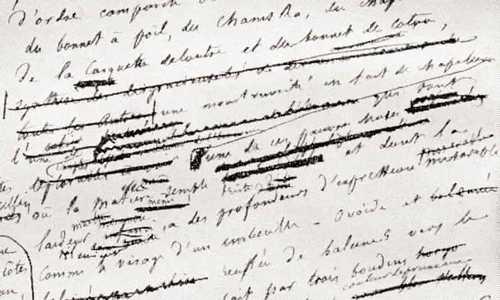How to write the perfect sentence
Curated from: theguardian.com
Ideas, facts & insights covering these topics:
6 ideas
·4.94K reads
32
Explore the World's Best Ideas
Join today and uncover 100+ curated journeys from 50+ topics. Unlock access to our mobile app with extensive features.
What celebrated writers can teach us
George Orwell thought a good sentence means trimming as many words as possible, Virginia Woolf found power in verbs, and Baldwin desired 'a sentence as clean as a bone.'
We can learn from celebrated writers that a good sentence is plain, undecorated and visible. It gets its power from the tension between the ease of its phrasing and the surprise of its thought. Each added word reduces alternatives and narrows the reader's expectations. But up to the last word, the writer can throw a curveball.
249
2.52K reads
A sentence is more than its meaning
A sentence is a living line of words with sense and sound. Beginner writers are often preoccupied with what they are trying to say and less about how that something looks and sounds. They focus on content and forget about form - how they say it.
A sentence must be felt by the reader. A feeling is something that grows and fades like any living thing. A sentence should unfold in space and time, not reveal itself at once.
222
633 reads
It's all in the verbs
Verbs go beyond the "formal railway line of sentence" to help people "feel or think or dream", wrote Virginia Woolf. During the second world war, she wrote this sentence in her diary: "Thinking is my fighting." Apart from the possessive pronoun, it consists of verbs or verb forms.
But like any skilled writer, Woolf varies sentence lengths. She alternates her long, elastic thought refrains with shorter fragments.
209
518 reads
Sentences have become less shackled
Contemporary writers leave space and silence between their sentences. It helps the reader see the full stop. Sentences are not chained together like in the past.
Sentences written a few hundred years ago often started with a whereof or a howsobeit, to continue an unfinished thought. They used many conjunctive adverbs - connecting words like moreover or indeed. Today's readers can link sentences without them.
200
429 reads
Joining separate thoughts
Many contemporary writers treat sentences as separate thoughts, then joins them with strong comparisons or contrast. This makes the sentences at the start and end of paragraphs vital.
You can change the entire tone of a sentence by shifting it from the end of a paragraph to the start of a new paragraph, or vice versa.
196
399 reads
Keeping a reader's attention
If sentences have enough life and interest in them, they will hold the reader's attention as it moves along.
A good lesson for any writer is to make each sentence worth reading, leading the reader to the following sentence. Write not only in sentences but write with sentences.
202
441 reads
IDEAS CURATED BY
Reese R.'s ideas are part of this journey:
Learn more about communication with this collection
Conflict resolution
Motivating and inspiring others
Delegation
Related collections
Similar ideas
4 ideas
How to Write Concisely
hbr.org
3 ideas
How to Write Concisely
hbr.org
7 ideas
How to Edit Your Own Writing
nytimes.com
Read & Learn
20x Faster
without
deepstash
with
deepstash
with
deepstash
Personalized microlearning
—
100+ Learning Journeys
—
Access to 200,000+ ideas
—
Access to the mobile app
—
Unlimited idea saving
—
—
Unlimited history
—
—
Unlimited listening to ideas
—
—
Downloading & offline access
—
—
Supercharge your mind with one idea per day
Enter your email and spend 1 minute every day to learn something new.
I agree to receive email updates

